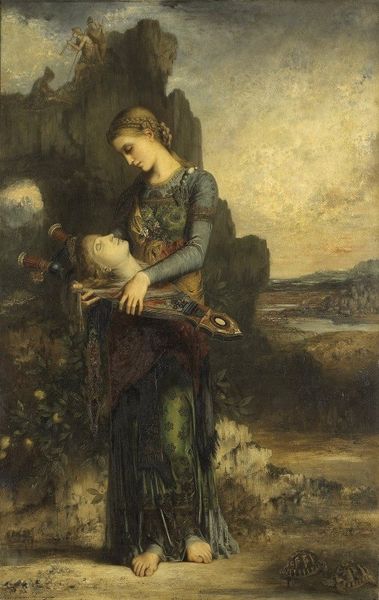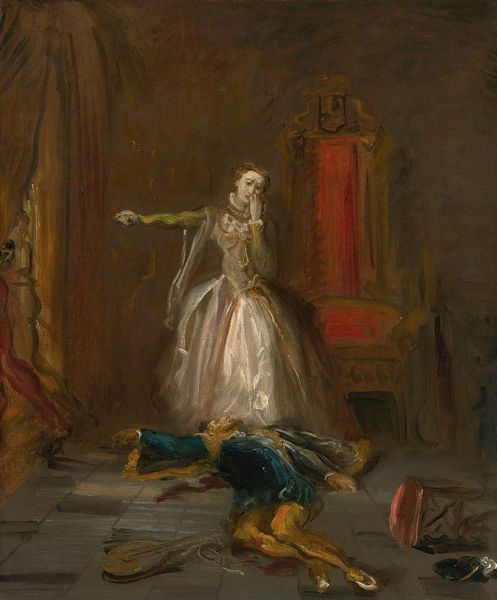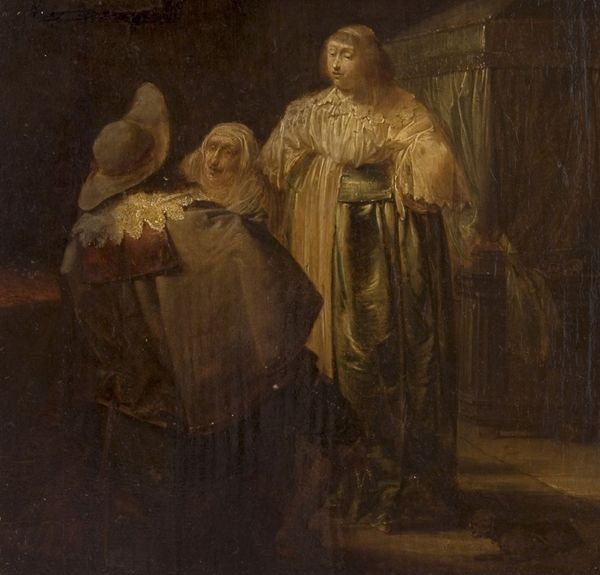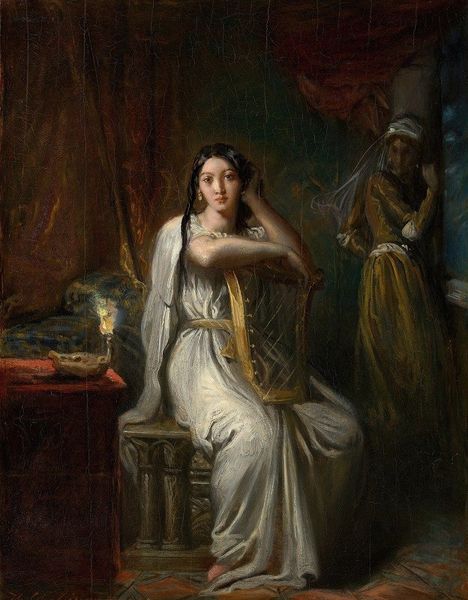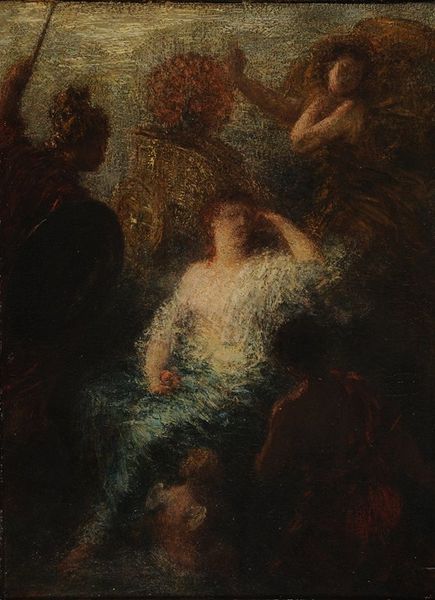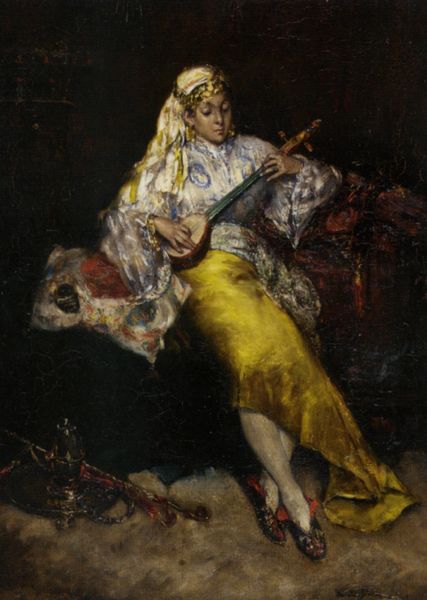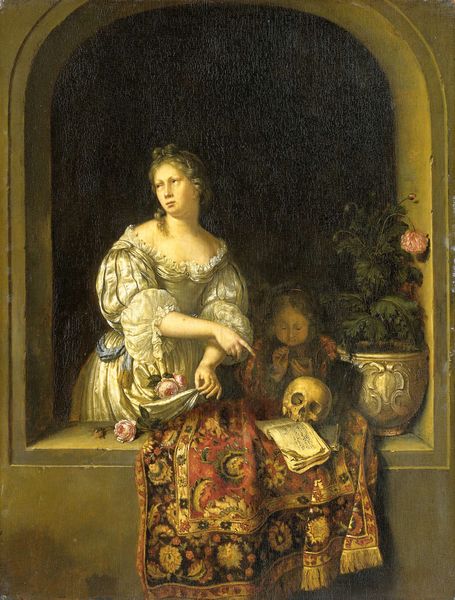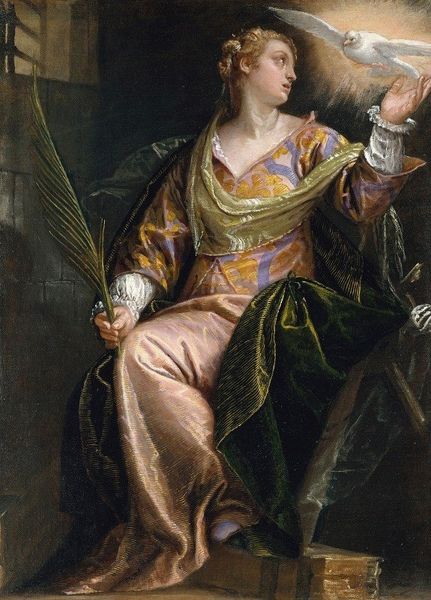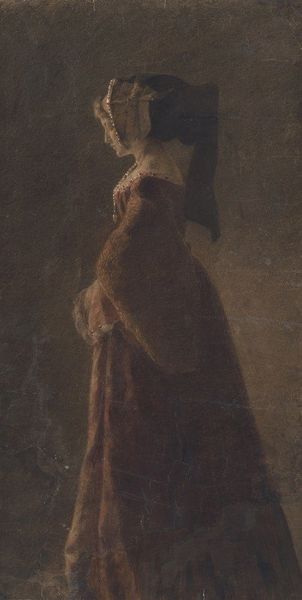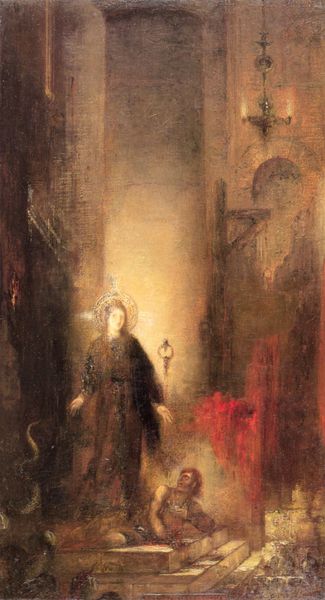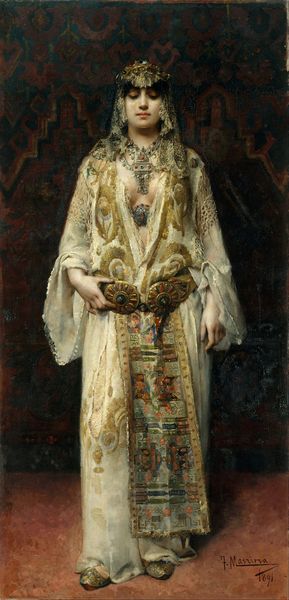
painting, oil-paint
#
portrait
#
allegory
#
painting
#
oil-paint
#
painted
#
figuration
#
oil painting
#
symbolism
#
history-painting
Copyright: Public Domain: Artvee
Ouch! In this gruesome oil painting from around 1876, the French artist Gustave Moreau (1826-1898) illustrates the biblical narrative that surrounds the beheading of John the Baptist. 🩸 Here, we see Salome – the daughter of King Herod – clutching a silver plate which supports the saint’s severed head. According to the biblical story, Salome demanded the head of John the Baptist after her father had promised to grant her anything that she wished. The composition centres on Princess Salome, dressed in a lavish dress that reflects the luxuriousness of the Decadent Movement. The Decadent Movement dominated French art and literature in the late nineteenth century, and displayed a focus on visual excess and materialism. Just take a look at that golden skirt and bejewelled belt! As a key figure in Symbolist painting, the artist Gustave Moreau combined this sense of dreamlike beauty with a grotesque literary subject. 🗡️ Moreau returned to the subject of ‘Salome with the Head of John the Baptist’ consistently throughout his career. He completed around nineteen oil paintings of the theme, as well as hundreds of drawings and sketches. In this specific work, painted on a traditional panel of wood, Moreau has included a beam of light emanating from the decapitated head. The glow disrupts the gloomy lighting which dominates the remainder of the painting. The light is reminiscent of a halo, and symbolises the holiness of John the Baptist. 😇 If you were granted a single desire, what would you wish for? Hopefully, it wouldn’t be the head of your enemy…👇💭 Editor: Lucy Jude Grantham

